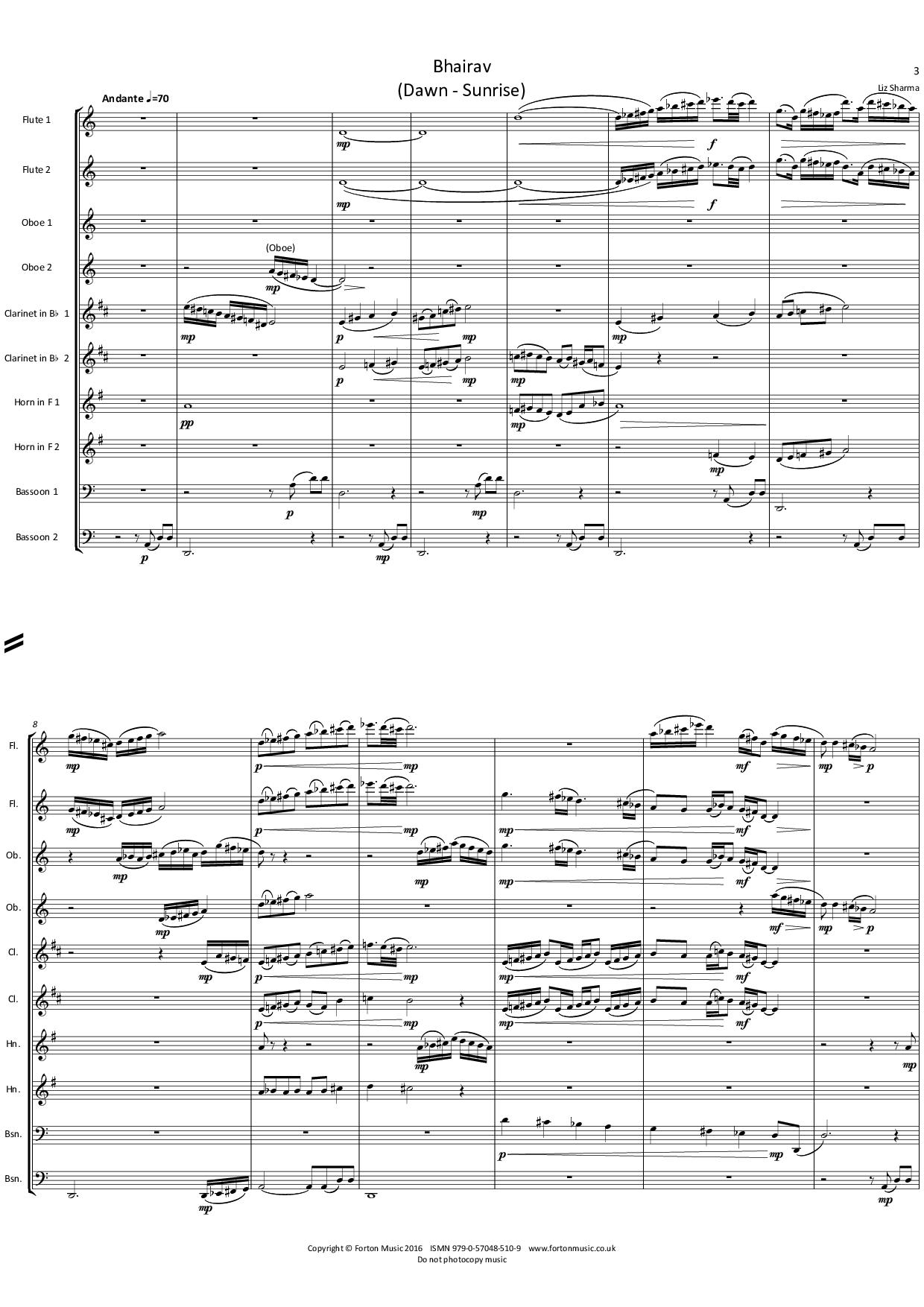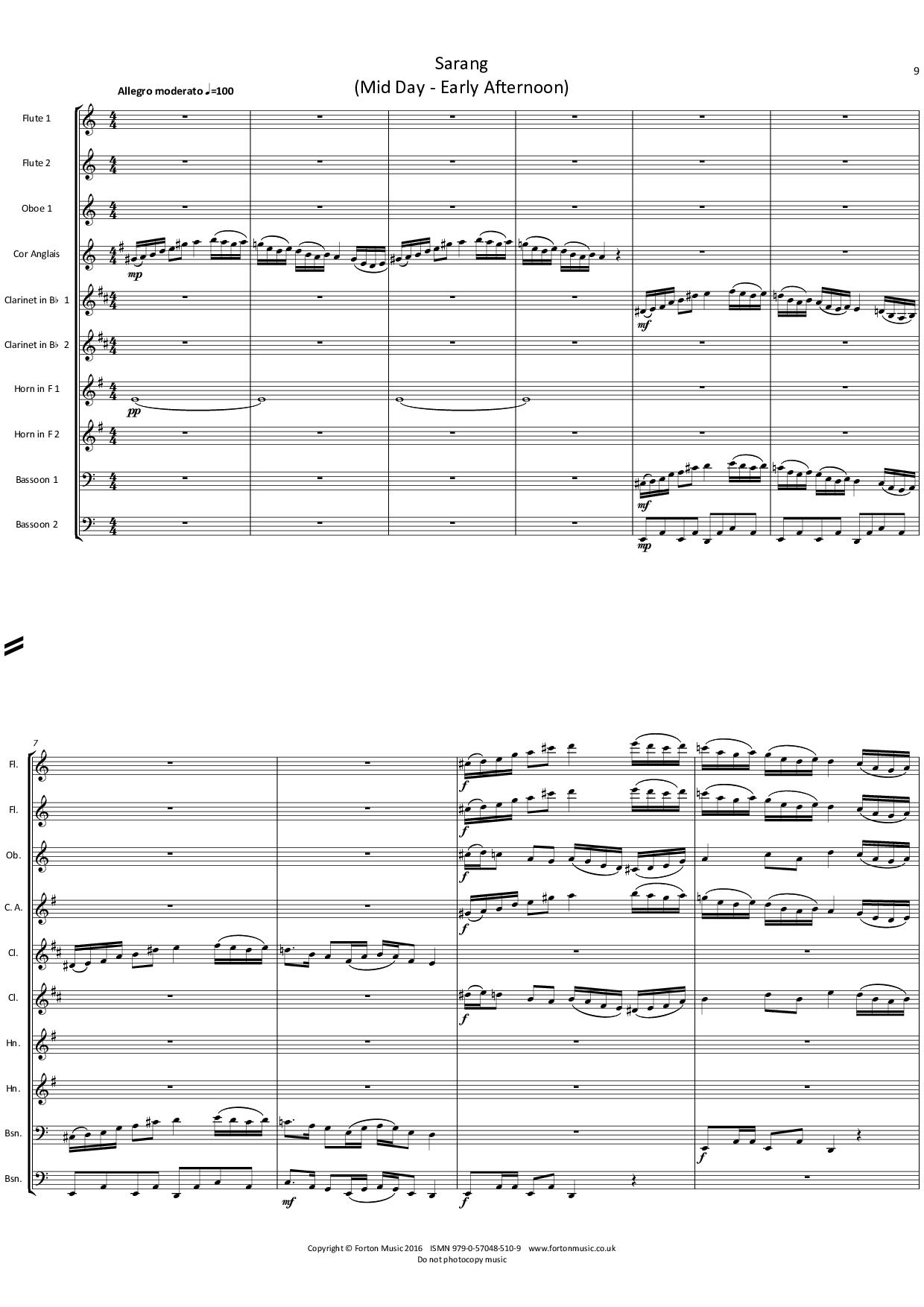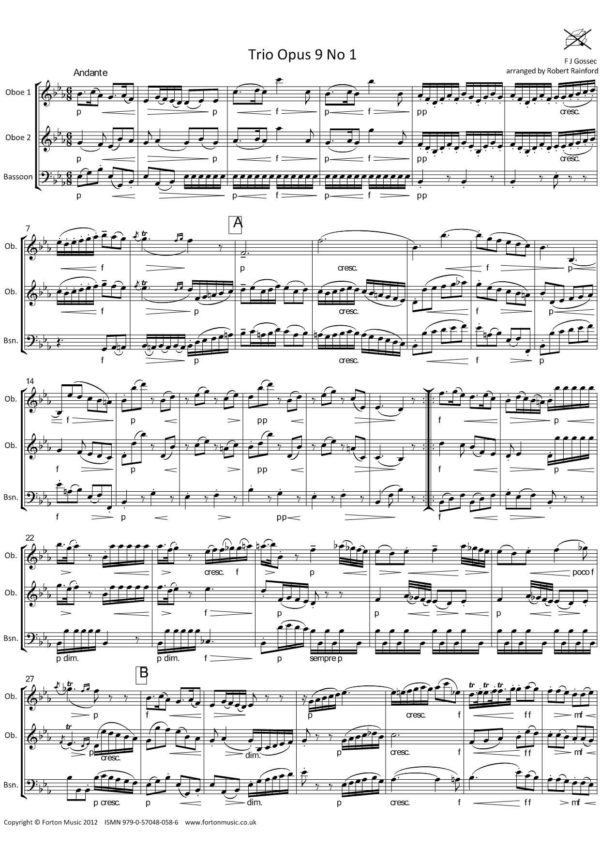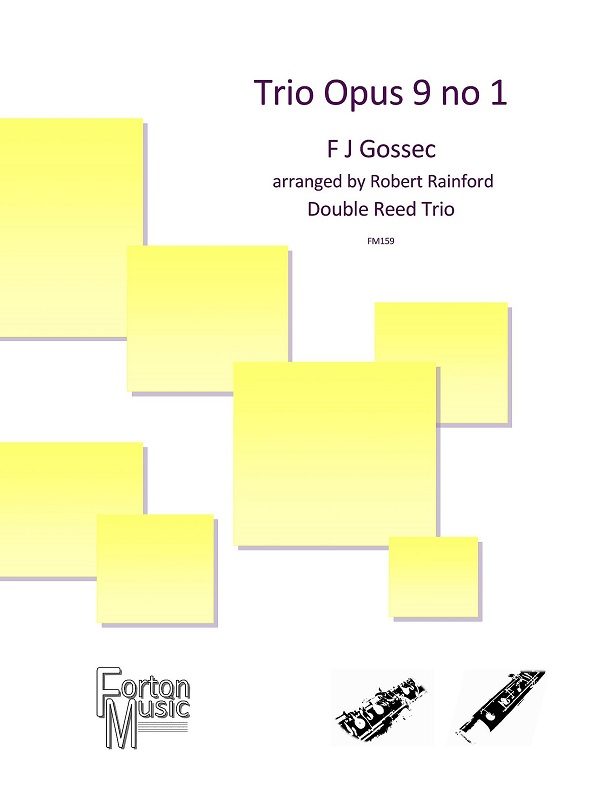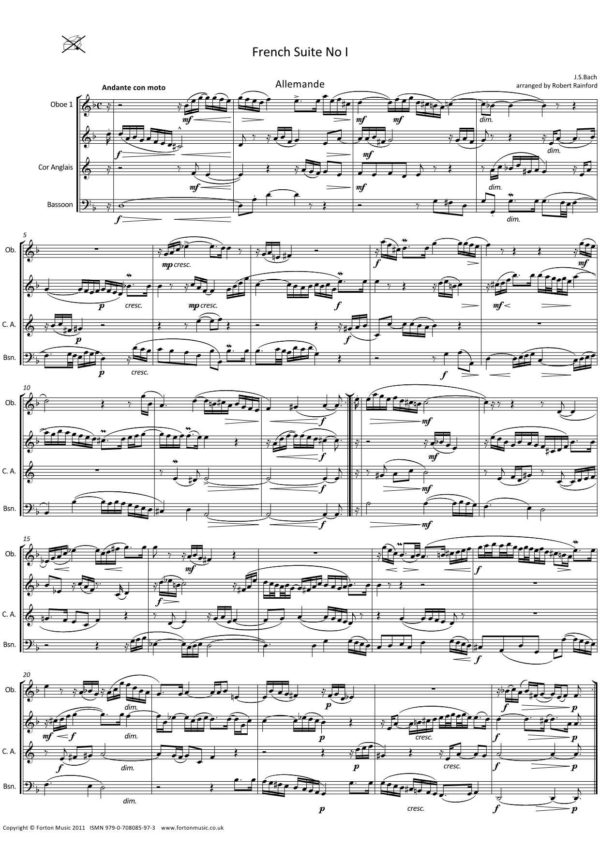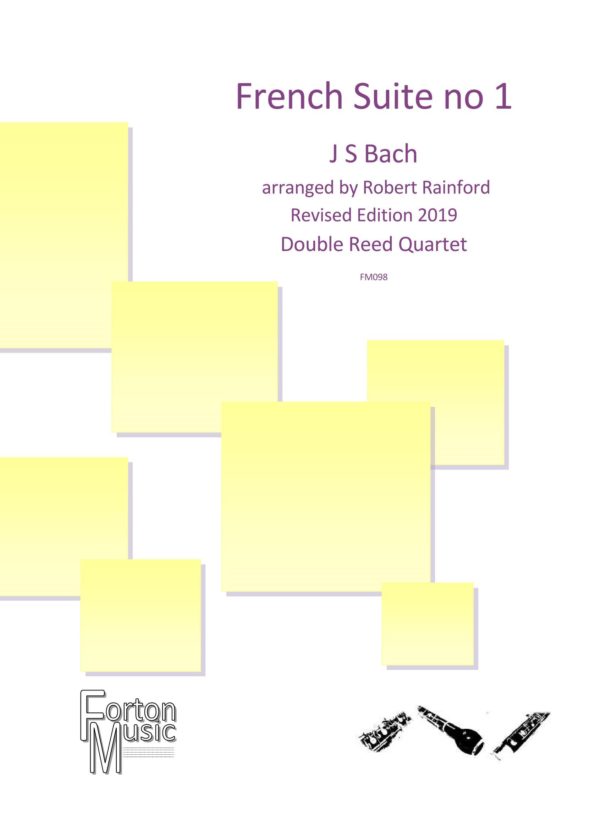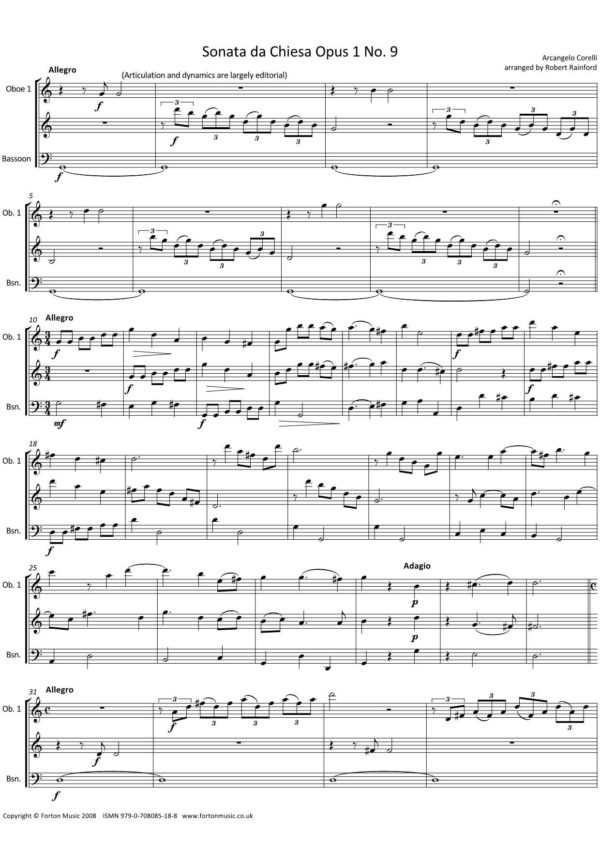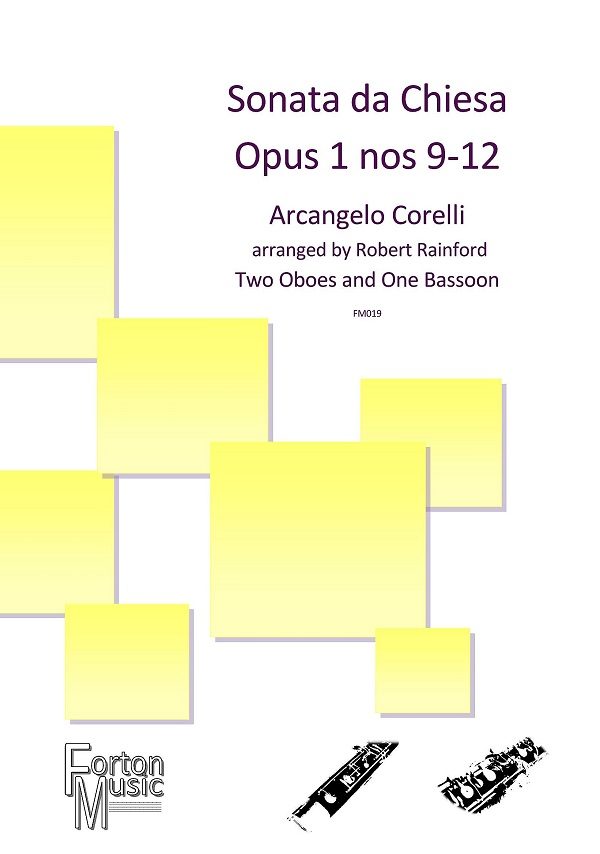Click the links below to see and hear each movement.
Ragmala
£18.75 – £25.00
Description
‘Ragmala’ (meaning ‘A garland of ragas) concerns the passing of a day, and is written in Indian ragas. Indian classical music is largely improvised according to the strict rules of melody (raga) and rhythm patterns (tala). The Indian scale is Sa Ri Ga Ma Pa Dha Ni Sa. A little like tonic sol-fa on that Sa can be pitched on any note the main performer chooses. However, whereas any note in Western classical music can be natural, sharp or flat, in Indian music Sa and Pa are only allowed to be natural, Ri, Ga, Dha and Ni can be flattened but never sharpened, whilst Ma can be sharpened, but never flattened. A raga (of which there are hundreds all with different names), is a cross between a scale and a melody, based on combinations of notes, and only the fixed notes of the raga can be used. Some ragas have a different order of notes when ascending or descending. Each raga is supposed to express the mood of a particular time of day, or season. There is a different concept of harmony in Indian music, as chord based harmony does not exist. Groups of classical musicians in India tend to be smaller, with most players playing different versions of the main melody. The harmony is formed by the rising and falling melody against a drone-like bass. in ‘Ragmala’ I have followed the rules of the ragas, but in a manner foreign to most Indian classical musicians, as I have allowed harmonies to form between the ten individual lines.
Additional information
| composer | |
|---|---|
| instrumentation | 2 Flutes, 2 Oboes (Oboe 2 doubling Cor Anglais), 2 Clarinets in Bb, 2 Horns in F, 2 Bassoons |
| skill-level | |
| Select an Option |


